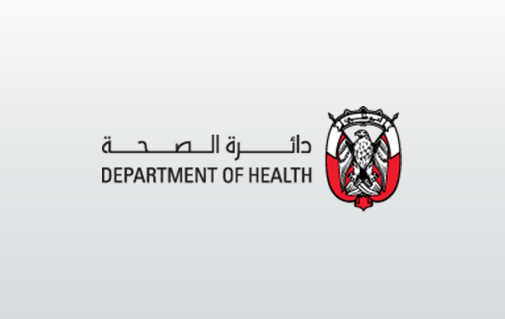News
Abu Dhabi Healthcare Strategic Plan Announced

23 Dec, 2014: The Health Authority – Abu Dhabi (HAAD), the regulator of the healthcare sector in the Emirate of Abu Dhabi, shed light on the Healthcare Sector strategic plan for the Emirate of Abu Dhabi for the next 5 years. Consensus was reached on the strategy during months of stakeholder and international expert consultation.
The priority areas focus on integrated continuum of care for individuals thereby reducing capacity gaps; quality of healthcare services, patient safety and experience; attracting, training and retaining qualified healthcare professionals; emergency preparedness; wellness and prevention to improve public health; ensuring value for money and sustainability of healthcare spending, including encouragement of private investment in healthcare; and an E-Health program as a facilitator for the other priorities.
Commenting on the strategy, H.E. Dr. Mugheer Khamis Al Khaili, Chairman of HAAD said: “Today we enter a new phase in the healthcare sector as we aim to take it to the next level of advancement. The foundation is set and it is now the time for innovative and better quality services. We will be working with both private and public sectors to ensure the implementation of the initiatives.”
“The Healthcare sector is a top priority in the Abu Dhabi Government agenda and we look forward to deliver the set outcomes as we move towards achieving Abu Dhabi’s vision 2030,” Al Khaili added.
To achieve these objectives, HAAD is to work on 58 initiatives covering all 7 priority areas in the coming 5 years.
Continuum of care: Reducing capacity gaps in healthcare services and minimizing reliance on international patient care; improving healthcare services in rural areas; and introducing mental health programs for the community, are among the initiatives set to address care for individuals.
Improving Quality of Healthcare: To improve quality of healthcare, the authority has launched “Jawda” initiative that enables a careful monitoring of the quality of healthcare, in preparation for linking it to incentives and other measures. The quality outcomes will be carefully studied, validated and benchmarked prior to releasing the results to the public. In addition the authority will support research and innovation to drive the improvement in healthcare delivery.
Attracting and Retaining Workforce: The Authority is also working on a comprehensive plan to attract, train and retain healthcare professionals with the focus on increasing the number of Emirati work force. To this effect, a memorandum of understanding was signed in November between HAAD, Abu Dhabi Healthcare Services Company (SEHA), Tawteen Council and Higher Colleges of Technology (HCT) to attract, train and recruit UAE nationals seeking careers in the healthcare industry. Currently and as per the 2013 Health Statistics, the number of licensed healthcare professionals in the Emirate reached over 30,000 (6’864 physicians, 1’220 dentists, 14’235 nurses and 5’332 allied health professionals and 2’396 pharmacists.)
Emergency Preparedness: Emergency preparedness is a key priority for HAAD with plans to improve healthcare sector preparedness during emergencies and disease outbreaks. HAAD will be working with key stakeholders on improving information and communication infrastructure and establishing necessary policies to govern the sector’s response to emergencies.
Wellness and Prevention of Disease: The wellness and prevention priority will address public health initiatives with a focus on the Weqaya program for UAE Nationals, injury prevention, mother and child care, occupational health, combating and preventing communicable disease, updating vaccine programs, reducing hereditary illnesses, and improving oral health in children.
According to HAAD 2013 statistics, injuries are the second leading cause of death (19.6%) and healthy life years lost in Abu Dhabi. Fatal injuries are caused primarily by road traffic accidents (62%), followed by injuries due to falls and falling objects (11%), and suicide (8%). Occupational injuries and childhood injuries account for 18.4% and 12.2% of total injury deaths respectively.
The Emirate has high rates of chronic diseases related to lifestyle, such as obesity, diabetes, and cardiovascular disease. Cardiovascular disease accounted for 36.7% of all deaths in 2013. Without major changes, these rates are set to increase further as the young population ages. Individuals thought to be at high risk of cardiovascular disease are being followed up.
Cancer caused 12.9% of all deaths in the Emirate in 2013. Lymphoid & hematopoietic, breast, and colorectal cancers are the dominant cancers in Abu Dhabi. Rates of childhood communicable diseases are very low, due to immunization programs targeting children under 5 years of age. Respiratory infections are the second most common non-life threatening condition in the Emirate, accounting for 11.1% of Episodes across all healthcare facilities. Respiratory infections mostly impact workforce productivity and quality of life.
Ensuring Value for Money – Cost-effectiveness: To ensure value for money and to sustain healthcare spending, HAAD has set a number of initiatives to monitor utilization of healthcare services, a plan to optimize spending on medical products, a system to assess health insurance premiums; and a network of medical laboratories to achieve savings. According to the data provided by healthcare entities in 2013, the Abu Dhabi health insurance system covered 2.73 million people. There were 14.3 million clinical episodes in which 83.9 million clinical activities were performed. The competitive Enhanced health insurance premium per member increased in 2013 by 10% to 3’380AED. Daman, the National Health Insurance Company, also administers Thiqa and Basic products. Claims per member have minimally risen from 6.3 in 2012 to 6.5 in 2013. On average payers take 51 days to remit claims. E-Health: A major component of the healthcare sector strategy is healthcare informatics and e-Health. HAAD is planning to create a health information platform to enable exchange of data among providers and this will facilitate the other priorities.Additionally, HAAD revealed its Investor Highlights and Capacity Masterplan. The “Investor Highlights” for 2013 reports aggressive growth in general medical services and services linked to lifestyle-related diseases, with larger volume increases in outpatient settings.
Addressing statistics and capacity gaps issues, H.E. Prof. Maha Taysir Barakat, Director General of HAAD said, “The Statistics report and Capacity Masterplan identify gaps in capacity and make recommendations on how to close them. A key focus of the plan is to provide information that encourages and stimulates investment and innovation in healthcare that will help close the gaps in capacity at both specialty and geographical levels for the benefit of Abu Dhabi residents.”
It is estimated that by 2022 up to 4’800 additional doctors and 13’000 nurses will be required. If turnover remains high, this translates into up to 1’700 doctors and 2’900 nurses to be recruited annually. In terms of supply, there has been 22% growth in the number of licensed physicians and dentists, 11% growth in the number of licensed facilities. There are currently 16 hospitals under construction that are more than 50% complete, which should provide up to 2’859 beds. This is an increase of 700 beds under construction in 2013 compared to 2012.
Capacity gaps exist in Intensive and Critical Care Medicine, Emergency Care, Neonatology, Paediatrics, Oncology, Orthopaedics, Rehabilitation and Psychiatry. Sub-specialty gaps exist in Paediatric and Paediatric Surgery. Adult Surgical sub-specialties including Neurosurgery, Plastic Surgery, and Surgical Oncology are all undersupplied in Abu Dhabi.
During 2015, there will be growth particularly in acute care services with the planned supply of Intensive and Critical care and Emergency Bays addressing the current shortfalls in these types of services by 2016. For a full copy of the 2013 Health Statistics and Capacity Masterplan please visit: www.haad.ae/Statistics
About Health Authority – Abu Dhabi (HAAD):
The Health Authority – Abu Dhabi (HAAD) is the regulative body of the Healthcare Sector in the Emirate of Abu Dhabi and ensures excellence in Healthcare for the community by monitoring the health status of the population. HAAD defines the strategy for the health system, monitors and analyses the health status of the population and performance of the system. In addition HAAD shapes the regulatory framework for the health system, inspects against regulations, enforces standards, and encourages adoption of world – class best practices and performance targets by all healthcare service providers in the Emirate. HAAD also drives programs to increase awareness and adoption of healthy living standards among the residents of the Emirate of Abu Dhabi in addition to regulating scope of services, premiums and reimbursement rates of the health system in the Emirate of Abu Dhabi.www.haad.ae/haad/
For media information, please contact:
Mahra Al Hajeri, Media Specialist, Health Authority - Abu Dhabi
Tel: +971 2 4193 295, email: malhajeri@haad.ae



 For an optimal experience please
For an optimal experience please